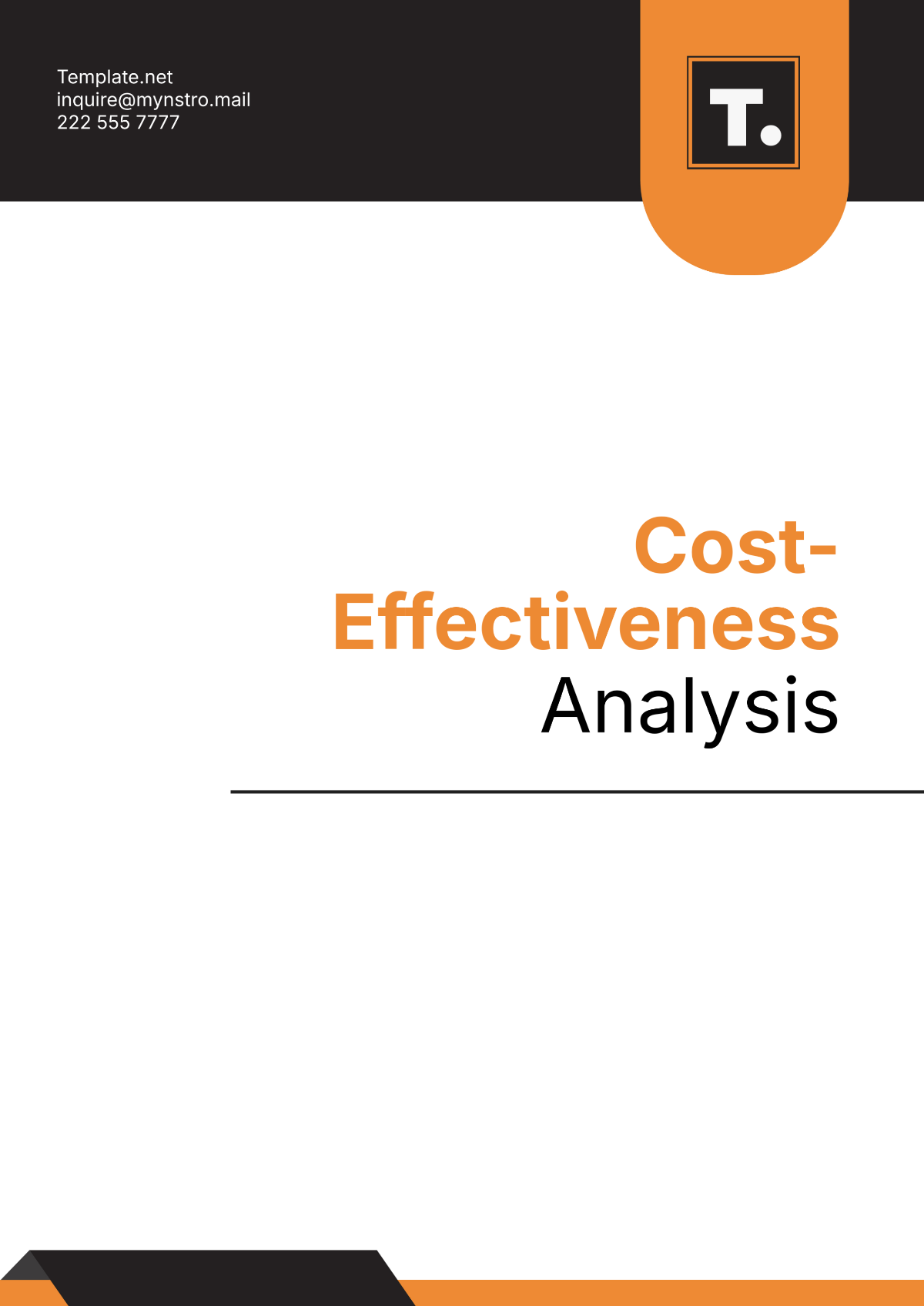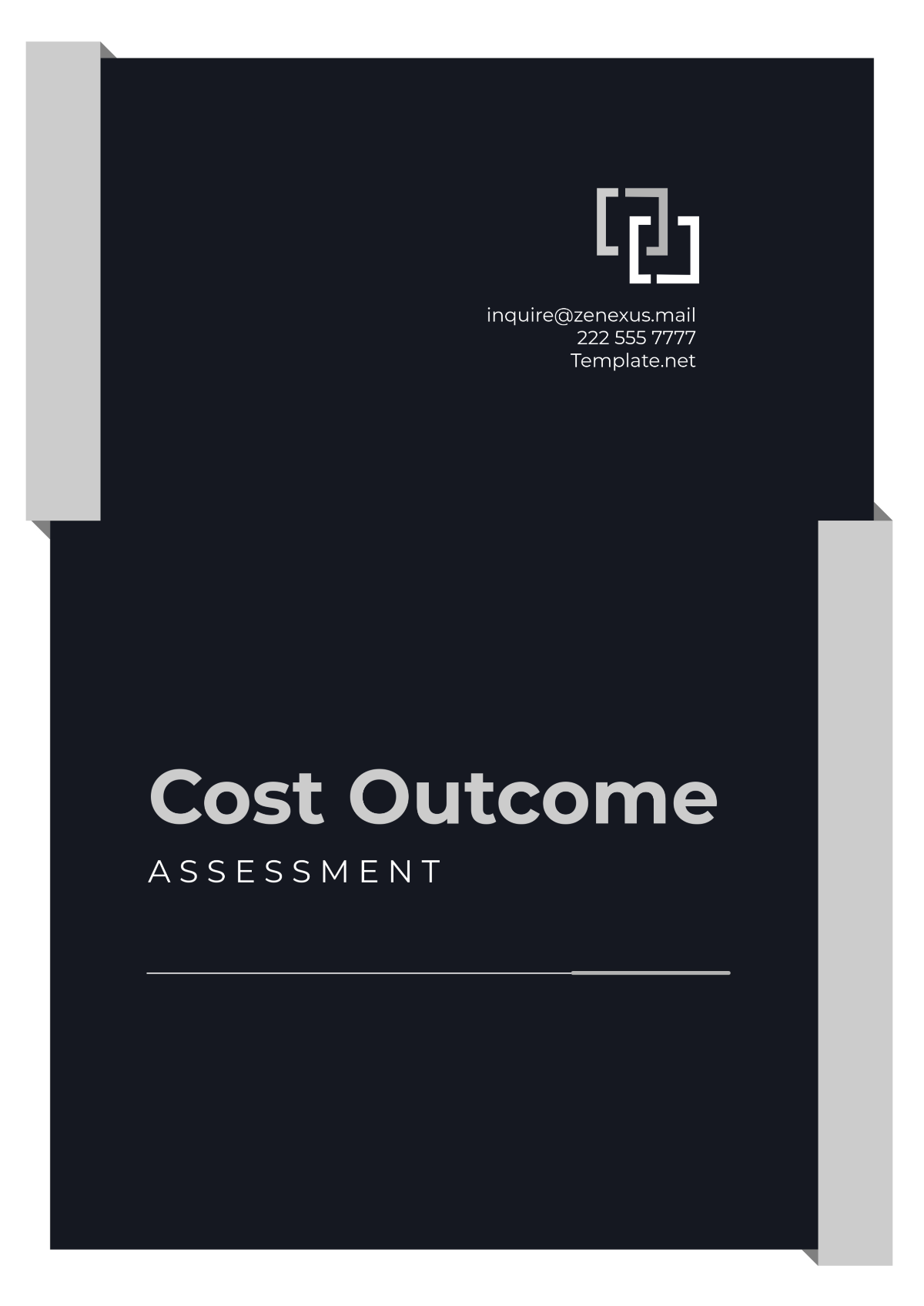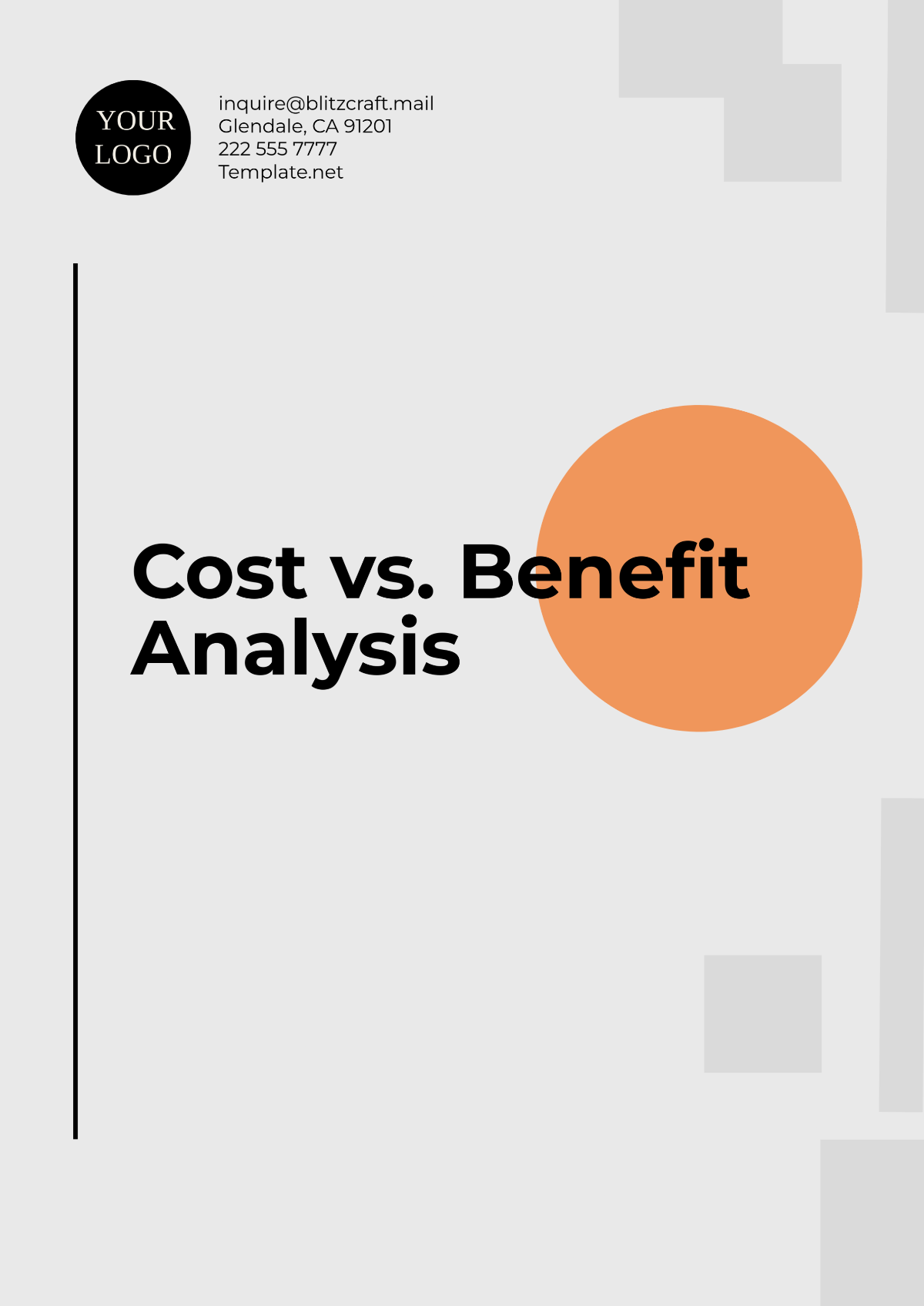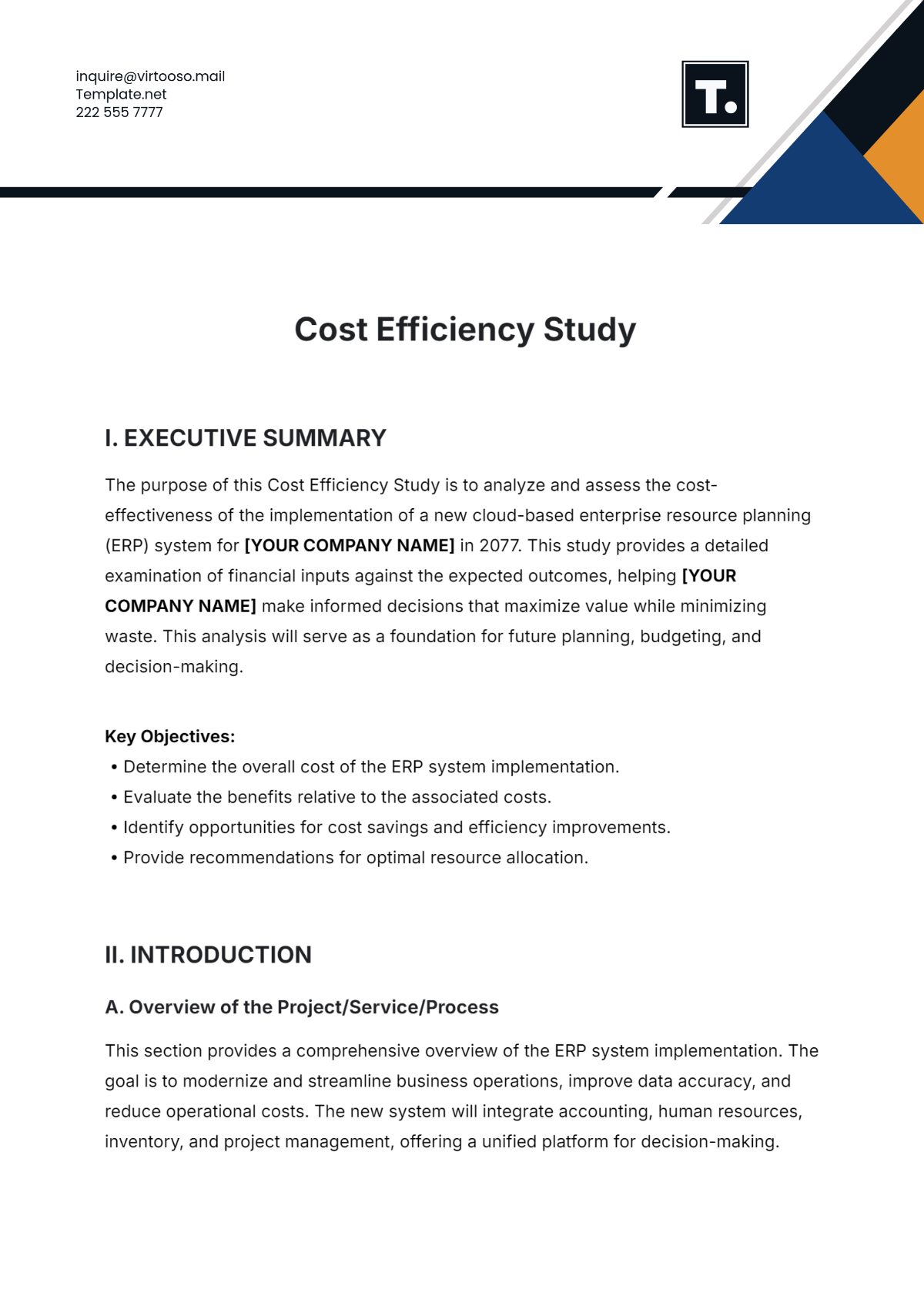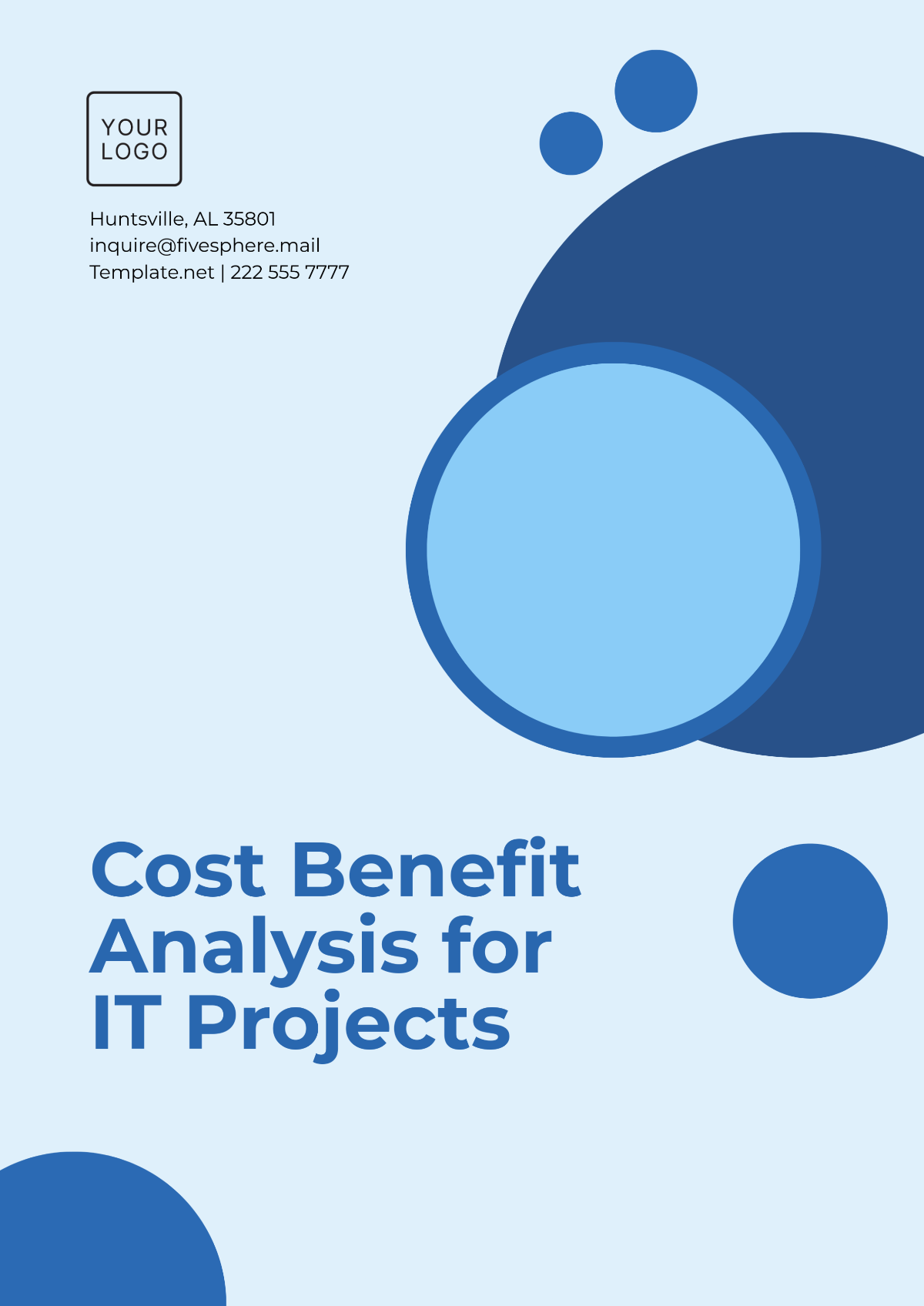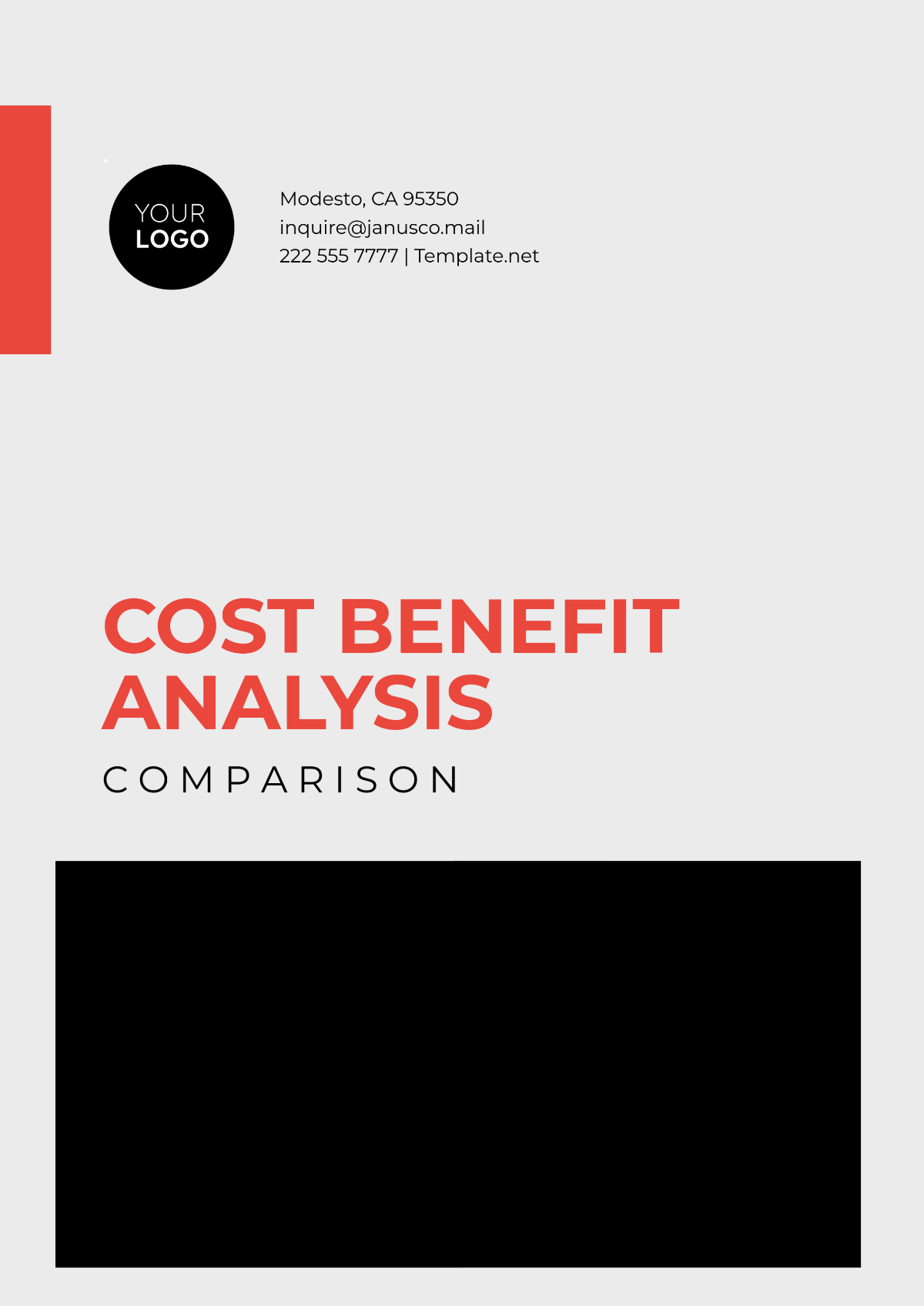Free IT Business Case Analysis Template
IT Business Case Analysis
Prepared By: | [YOUR NAME] |
Company: | [YOUR COMPANY NAME] |
Department: | [YOUR DEPARTMENT] |
I. Introduction
In today's dynamic business landscape, the integration of information technology solutions has become imperative for organizations aiming to stay competitive and relevant. This analysis seeks to evaluate the potential benefits, costs, and risks associated with implementing an information technology solution or project within a business context. By providing stakeholders with comprehensive insights, this analysis aims to facilitate informed decision-making regarding IT investments.
II. Objectives
Identify Business Objectives: Define the overarching goals and objectives driving the need for IT integration.
Assess IT Solution: Evaluate the proposed IT solution's alignment with business objectives and its potential to deliver value.
Analyze Costs: Examine the financial implications of implementing the IT solution, including initial investment, operational costs, and potential cost savings.
Mitigate Risks: Identify and assess potential risks associated with the IT project and develop strategies to mitigate them.
Evaluate Benefits: Quantify the expected benefits of the IT solution in terms of efficiency gains, revenue growth, and competitive advantage.
III. Methodology
The analysis will be conducted through a combination of qualitative and quantitative methods, including:
Stakeholder Interviews: Engage key stakeholders to gather insights into business objectives, pain points, and expectations.
Cost-Benefit Analysis: Utilize financial models to estimate the total cost of ownership (TCO) and assess the return on investment (ROI) of the IT solution.
Risk Assessment: Conduct a thorough risk analysis to identify potential obstacles and develop risk mitigation strategies.
Benchmarking: Compare the proposed IT solution with industry standards and best practices to gauge its effectiveness.
IV. Findings
A. Business Objectives
Increase Operational Efficiency: Streamline business processes and workflows to enhance productivity and reduce costs.
Improve Customer Experience: Enhance customer satisfaction through personalized services, faster response times, and seamless interactions.
Drive Revenue Growth: Identify new revenue streams and opportunities for business expansion through innovative IT solutions.
B. IT Solution Assessment
Alignment with Business Objectives: Evaluate how well the proposed IT solution addresses the identified business needs and objectives.
Scalability and Flexibility: Assess the scalability and flexibility of the IT solution to accommodate future growth and evolving business requirements.
Integration Capabilities: Determine the ease of integration with existing systems and compatibility with third-party applications.
Security and Compliance: Evaluate the IT solution's security measures and compliance with regulatory standards to mitigate potential risks.
C. Cost Analysis
1. Initial Investment
Category | Cost (USD) |
|---|---|
Hardware | [Enter Cost] |
Software Licenses | [Enter Cost] |
Implementation Fees | [Enter Cost] |
Training and Support | [Enter Cost] |
Total Initial Cost | [Total Cost] |
2. Operational Costs
Maintenance: Estimate ongoing maintenance expenses, including software updates, hardware repairs, and technical support.
Training: Budget for employee training and development to ensure effective utilization of the IT solution.
Utilities: Factor in additional utility costs associated with increased IT infrastructure usage.
D. Risk Assessment
Technical Risks: Potential challenges related to system compatibility, data migration, and software bugs.
Security Risks: Threats such as data breaches, cyberattacks, and compliance violations.
Operational Risks: Risks stemming from human error, inadequate training, or process disruptions.
Financial Risks: Fluctuations in project costs, budget overruns, and unforeseen expenses.
E. Benefits Evaluation
Operational Efficiency: Anticipated reductions in processing time, improved resource allocation, and streamlined workflows.
Cost Savings: Forecasted savings from reduced manual effort, lower operational expenses, and optimized resource utilization.
Revenue Growth: Projected increase in sales revenue, market share, and customer acquisition attributed to enhanced capabilities.
V. Recommendations
Based on the analysis findings, the following recommendations are proposed:
Proceed with Implementation: Given the alignment with business objectives and the potential for significant benefits, it is recommended to proceed with the implementation of the IT solution.
Risk Mitigation Strategies: Develop and implement proactive measures to address identified risks and minimize their impact on project success.
Financial Planning: Ensure adequate budget allocation for both initial investment and ongoing operational costs, considering potential fluctuations and contingencies.
Monitoring and Evaluation: Establish key performance indicators (KPIs) to monitor the effectiveness of the IT solution post-implementation and make necessary adjustments as needed.
VI. Conclusion
In conclusion, the analysis highlights the significant potential of integrating the proposed IT solution to drive business growth, improve operational efficiency, and enhance competitiveness. By carefully considering the identified benefits, costs, and risks, stakeholders can make informed decisions that align with organizational objectives and priorities.



